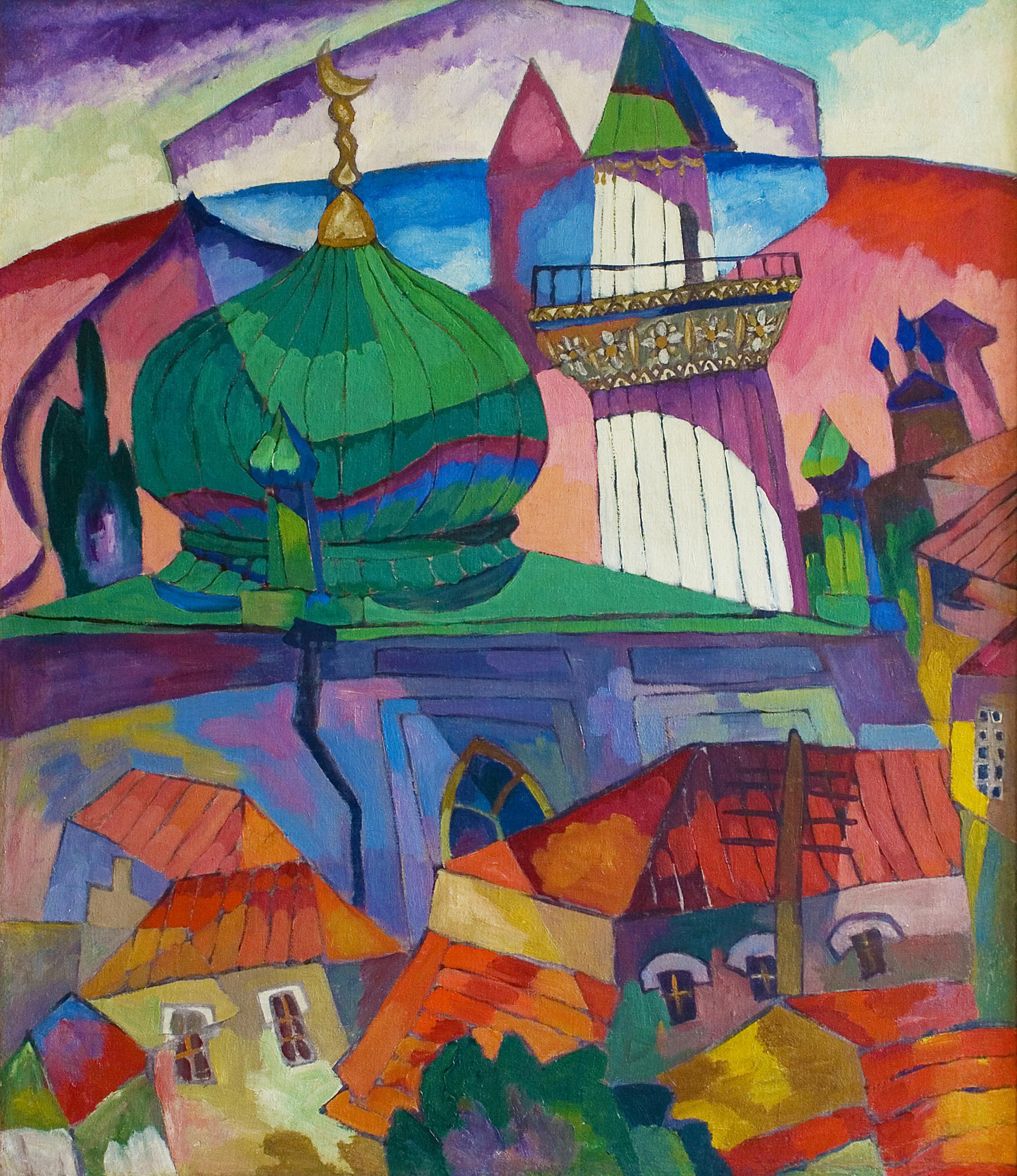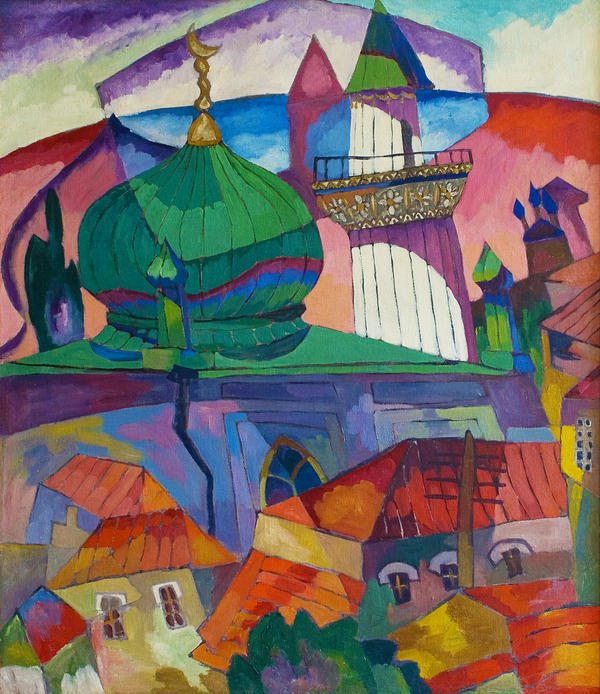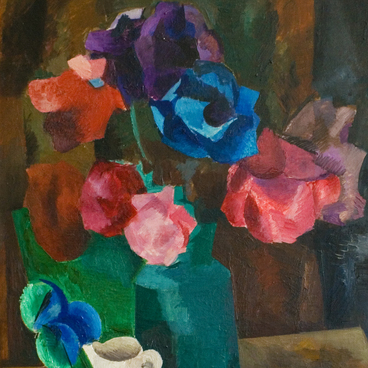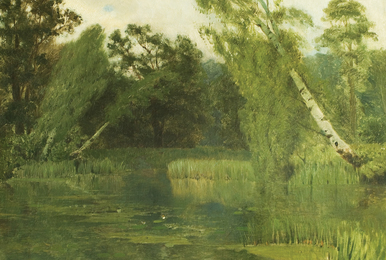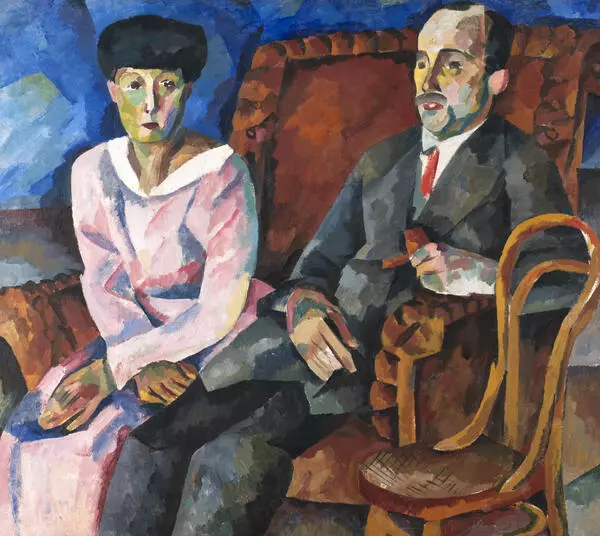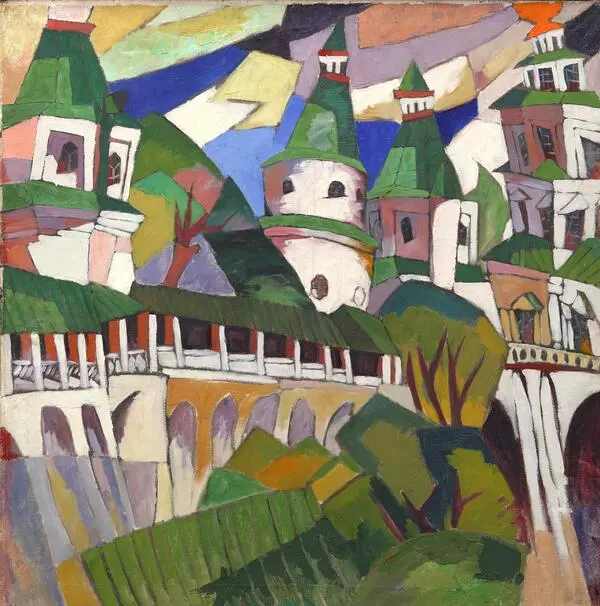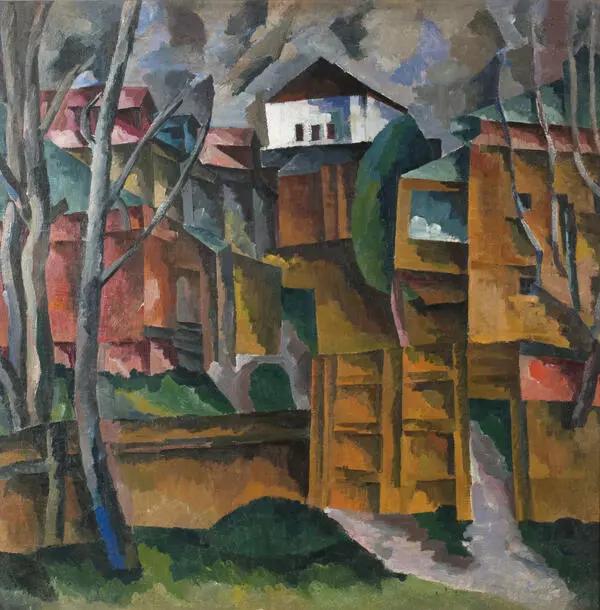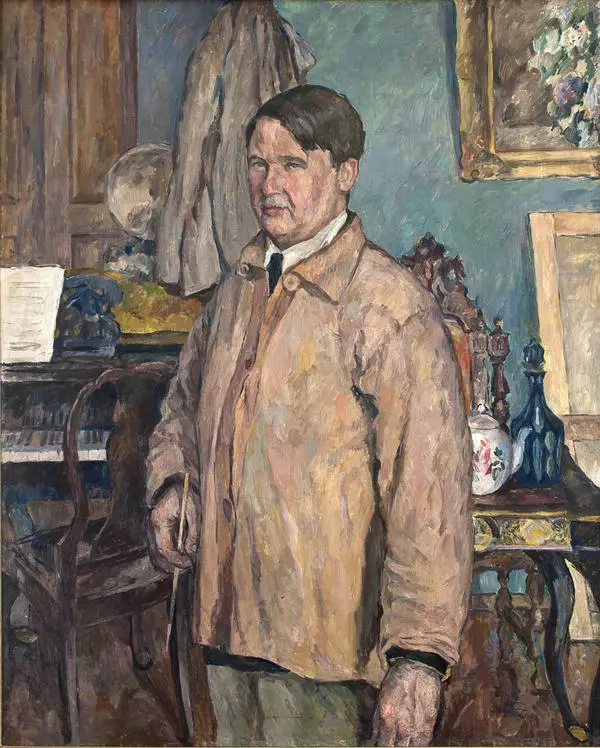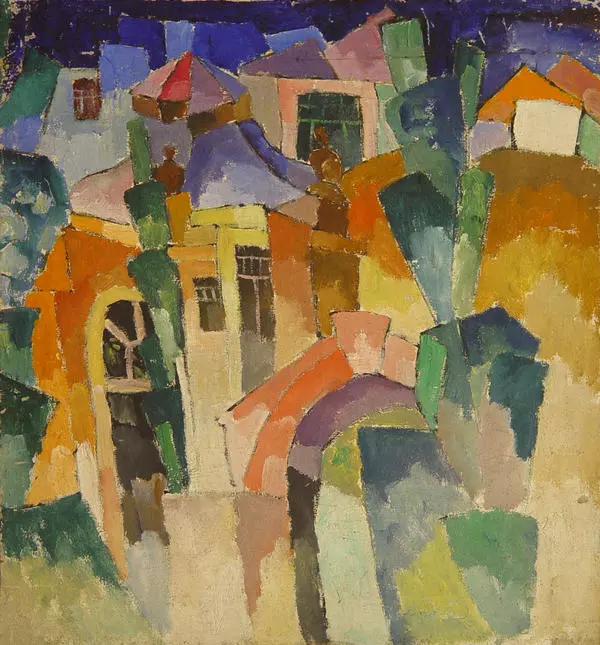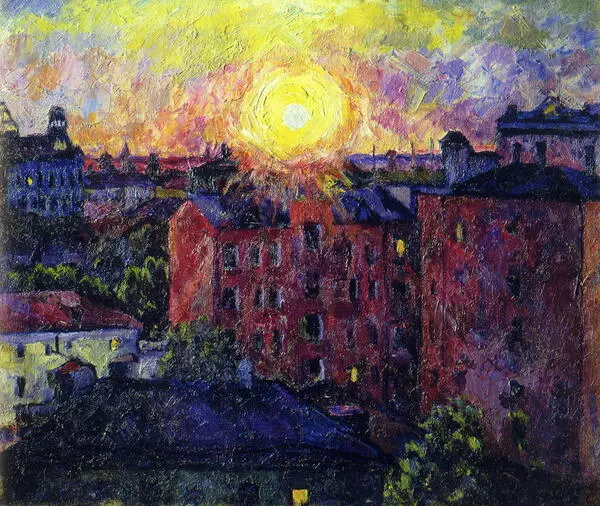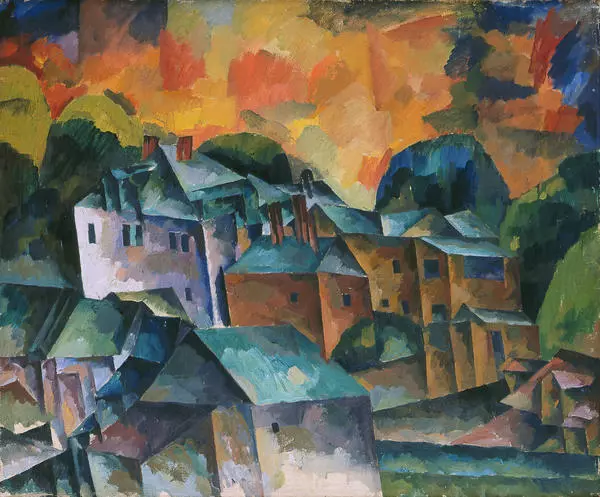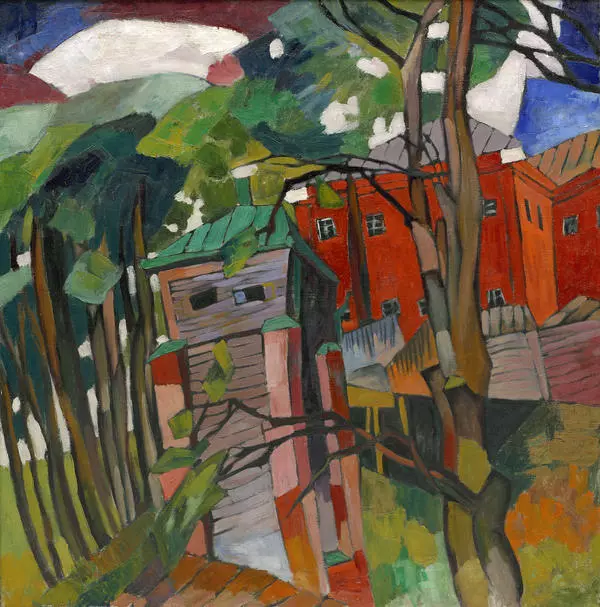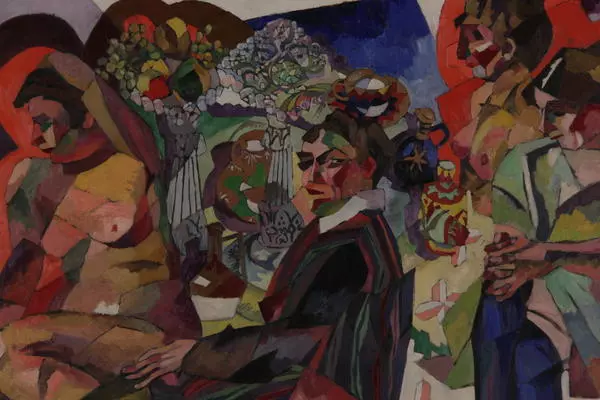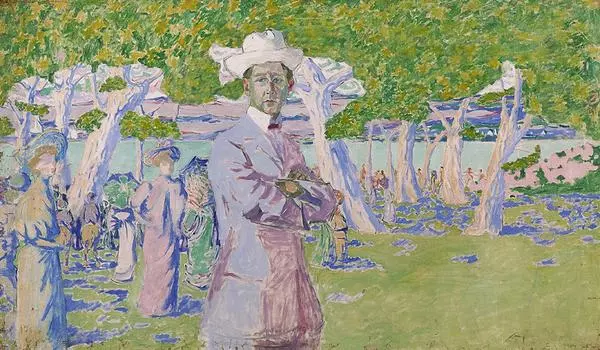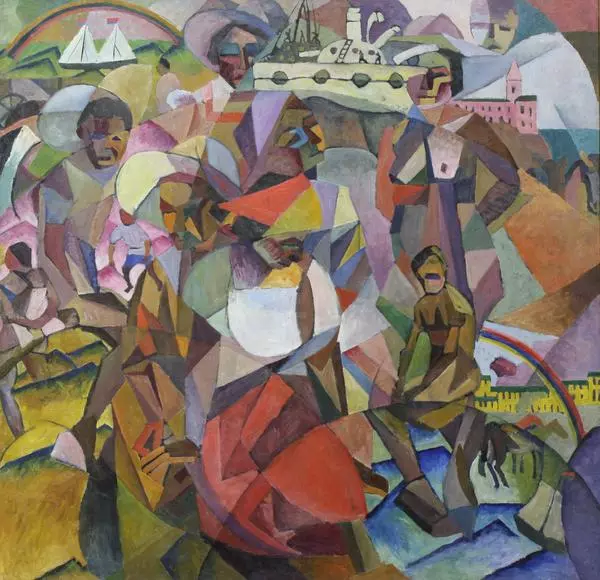In a playful and burlesque self-portrait dated 1915, Aristarkh Lentulov portrayed himself as a farcical strongman, which did justice to his character and his life mission. He was among the initiators of avant-garde association Jack of Diamonds, representing ethnical and naive (amateur) art.
At the same time, Lentulov was one of the most striking and distinctive followers of Cubism. In Paris, where the artist worked in Le Fauconnier’s studio, he met the theorists of Cubism – Albert Gleizes and Jean Metzinger. The method they declared was in line with Lentulov’s love for bright colors of popular prints, large formats and resonant colors of his paintings.
On the painting Mosque presented at the museum, the artist depicted a mosque that he had seen in the vicinity of Khan’s palace in the town of Alupka. Like other futuristic cityscapes painted by Lentulov in the 1910s, this work combines Russian folklore and European Expressionism in a harmonious eclectic style.
The painting is composed of brightly colored planes that dynamically collide with each other. In general, the canvas space gravitates towards a plane; it does not show classic deep spatial perspective. However, the energy with which the artist builds the composition causes an illusion of movement, of a continuous change in angles and colors. Lentulov shows the city as a wonderfully flowering “architectural miracle”.
The arrangements of disparate parts and angles, as well as color dynamics, were among prominent features of Lentulov’s artistic style. In his paintings, he often transformed real places, objects, buildings and even cities into bizarre and vibrant imaginative worlds. The artist’s daughter Marianna, recounting her father’s work on the painting Saint Basil’s Cathedral, recalled that Lentulov wanted to show the cathedral “as if from everywhere”, from all sides.
At the same time, Lentulov was one of the most striking and distinctive followers of Cubism. In Paris, where the artist worked in Le Fauconnier’s studio, he met the theorists of Cubism – Albert Gleizes and Jean Metzinger. The method they declared was in line with Lentulov’s love for bright colors of popular prints, large formats and resonant colors of his paintings.
On the painting Mosque presented at the museum, the artist depicted a mosque that he had seen in the vicinity of Khan’s palace in the town of Alupka. Like other futuristic cityscapes painted by Lentulov in the 1910s, this work combines Russian folklore and European Expressionism in a harmonious eclectic style.
The painting is composed of brightly colored planes that dynamically collide with each other. In general, the canvas space gravitates towards a plane; it does not show classic deep spatial perspective. However, the energy with which the artist builds the composition causes an illusion of movement, of a continuous change in angles and colors. Lentulov shows the city as a wonderfully flowering “architectural miracle”.
The arrangements of disparate parts and angles, as well as color dynamics, were among prominent features of Lentulov’s artistic style. In his paintings, he often transformed real places, objects, buildings and even cities into bizarre and vibrant imaginative worlds. The artist’s daughter Marianna, recounting her father’s work on the painting Saint Basil’s Cathedral, recalled that Lentulov wanted to show the cathedral “as if from everywhere”, from all sides.
